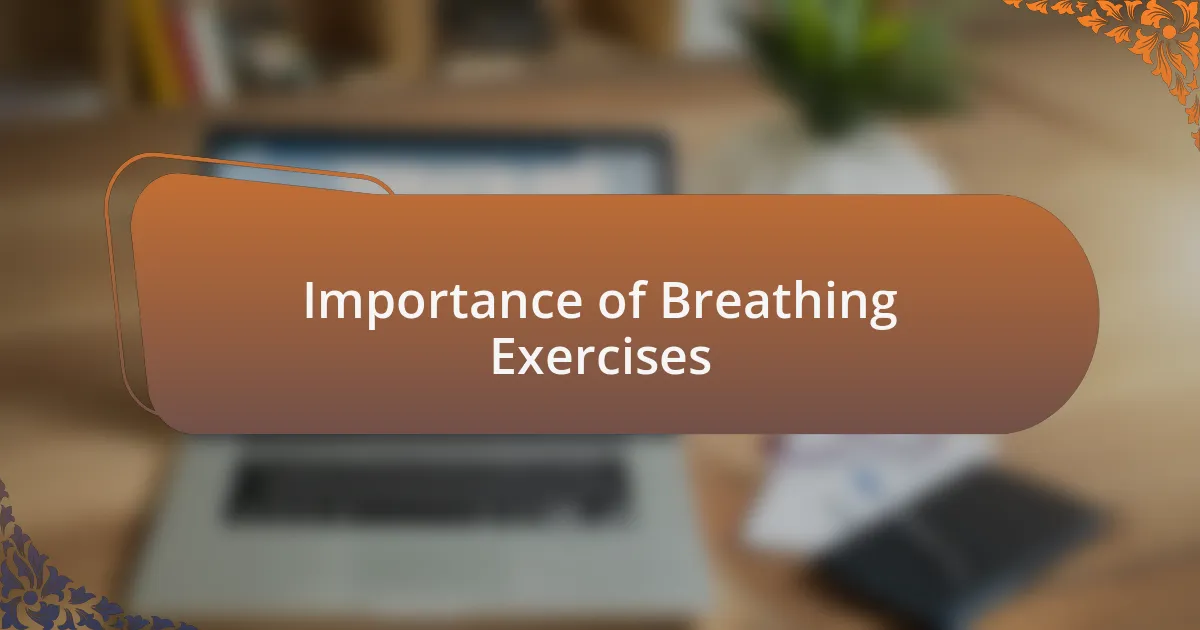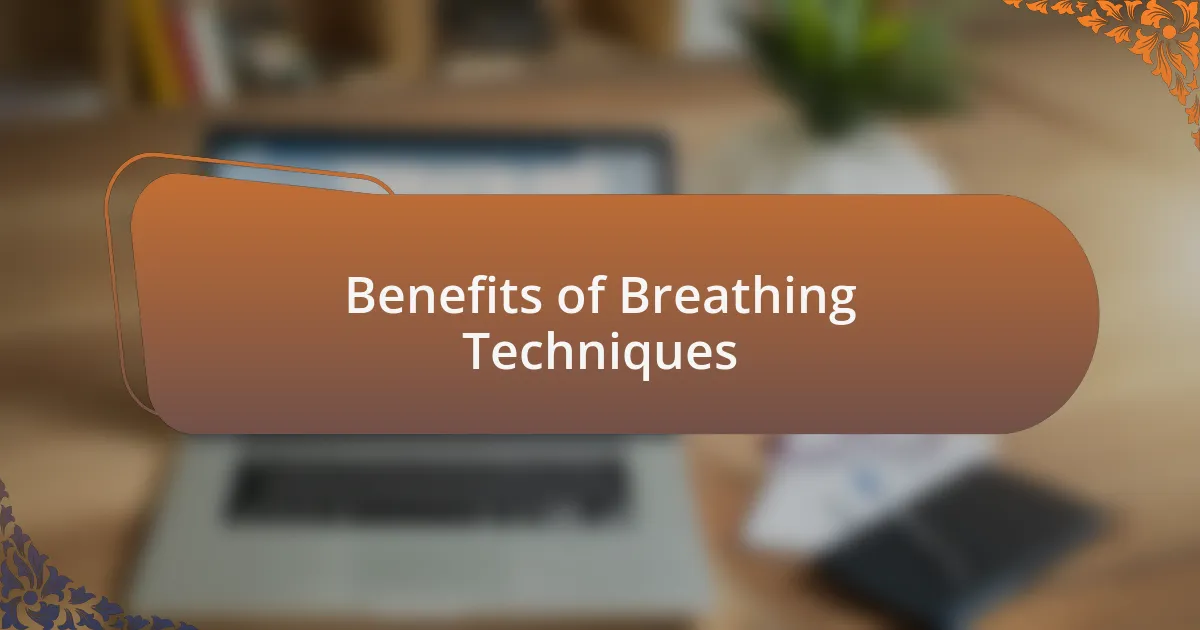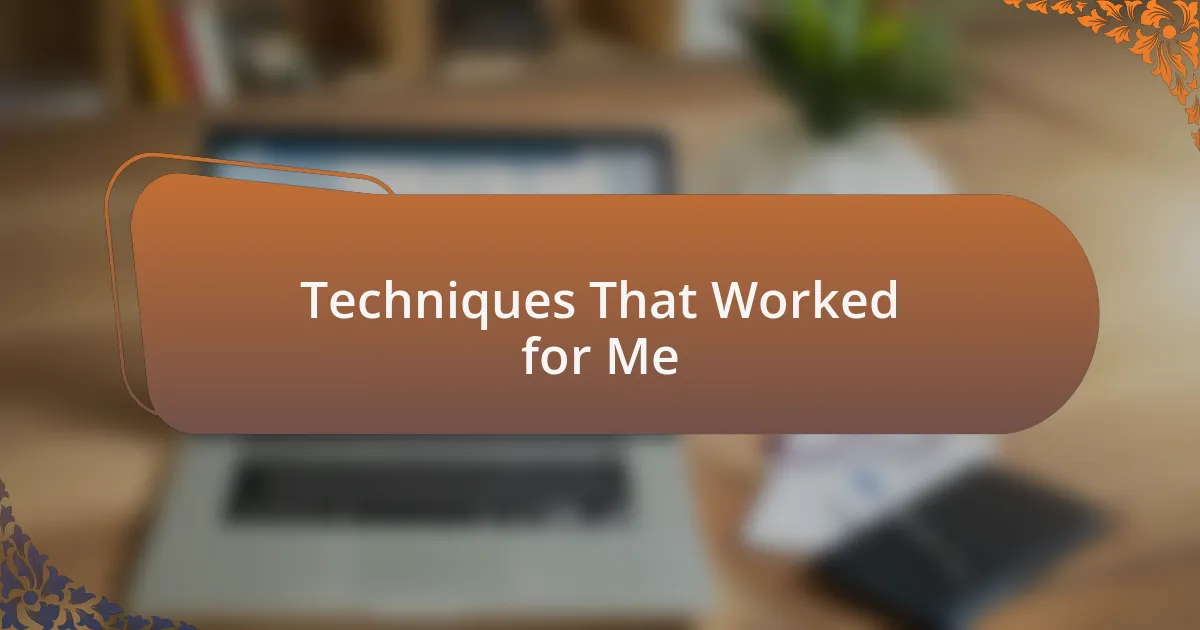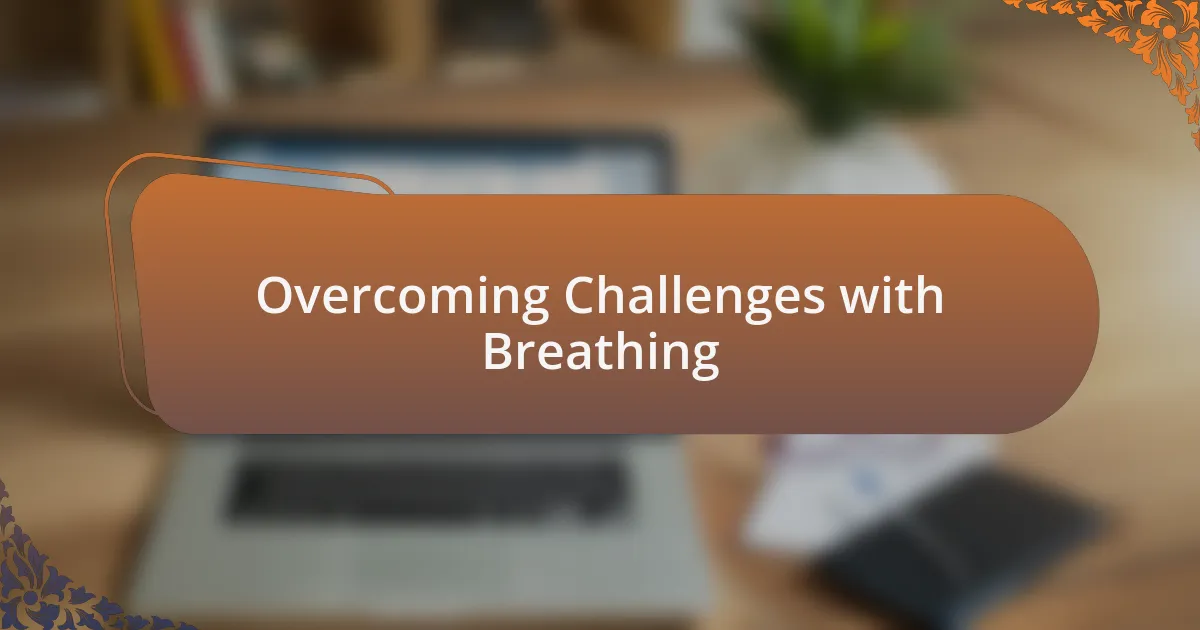Key takeaways:
- Selective Mutism is a complex anxiety disorder that makes communication difficult in specific social contexts, often rooted in temperament and environmental factors.
- Breathing exercises are essential for managing anxiety associated with selective mutism, helping to activate relaxation responses and reduce panic.
- Different breathing techniques, such as diaphragmatic and box breathing, can significantly improve emotional and physical reactions to anxiety, fostering resilience and clarity.
- Visualization during breathing exercises enhances the experience, empowering individuals to transform their anxious narratives into positive affirmations of control and healing.

Understanding Selective Mutism
Selective Mutism is a complex anxiety disorder that primarily affects children, making it difficult for them to speak in certain social situations. I clearly remember the feeling of being in a crowded classroom where everyone was chatting effortlessly, while I sat frozen, my voice trapped somewhere deep inside me. Have you ever felt that overwhelming pressure to say something, only to find silence creeping in?
The roots of selective mutism often lie in a child’s temperament and environmental factors, such as family dynamics or significant life changes. Reflecting on my own experiences, I’ve seen how a supportive environment can be transformative. Was there ever a time when someone made you feel safe enough to express yourself?
Understanding how this disorder manifests is crucial. It can be misunderstood as shyness or rudeness, but it’s so much more intricate. I often ponder how important it is for those around us to recognize this condition, as a little empathy can go a long way in helping someone find their voice.

Importance of Breathing Exercises
Breathing exercises hold immense significance, especially for those grappling with selective mutism. I remember when I first discovered deep breathing techniques; it felt like a lifeline. Simply taking a moment to focus on my breath helped to alleviate the intense anxiety that often gripped me in social situations. Have you ever noticed how controlling your breath can redirect your thoughts and emotions?
The power of these exercises lies in their ability to activate the body’s relaxation response. By engaging in simple practices like inhaling deeply through the nose and exhaling slowly through the mouth, I found that I could reduce panic and create a calmer mental state. This shift often made it easier to communicate, even if just a little at a time. How often do you pause to breathe and ground yourself during overwhelming moments?
Incorporating breathing exercises into my daily routine became a game-changer. It was as if each breath created a bridge between my anxious thoughts and the voice I longed to share. I realized that taking control over my breathing not only empowered me to cope with my feelings but also allowed me to embrace new communication opportunities. Have you ever experienced the magic of a single deep breath? It can truly transform a moment.

Benefits of Breathing Techniques
Breathing techniques have a remarkable ability to foster clarity in my mind. I remember a particularly challenging day when the anxiety felt overwhelming. Just by pausing and focusing on my breath, I could feel the fog lifting, allowing me to gather my thoughts and face the situation head-on. Have you ever felt that peaceful clarity wash over you after simply breathing deeply?
One of the most surprising benefits I discovered was how these exercises improved my physical reactions to anxiety. When my heart raced and my palms turned sweaty, taking a moment to practice deep breathing helped to regulate those responses. It was as if I was rewiring my body’s reaction to stress. How often do you overlook the physical aspect of your emotions and the soothing potential of a few mindful breaths?
Through continuous practice, I found that breathing techniques not only calmed my immediate anxiety but also built a foundation for long-term resilience. Over time, the mental space created through deep breathing helped me to prepare for conversations that once seemed daunting. Is there a moment you now wish you could approach with more ease? That sense of readiness is something I cherish, and I credit much of it to the simple act of breathing with intention.

My Breathing Exercise Journey
Embracing breathing exercises became a turning point for me. I remember sitting alone in my room before a big social event, feeling a knot in my stomach. I closed my eyes, inhaled deeply, and exhaled slowly, reminding myself that it was okay to feel anxious. After a few minutes, the tension eased, and I surprisingly found the courage to step out. Has a simple act ever transformed your fear into confidence?
As I progressed on this journey, different techniques resonated with me. I started incorporating a 4-7-8 breathing exercise into my daily routine. The first time I tried it, I felt a wave of calm envelop me, like a warm blanket on a cold day. Repeating this practice not only aided my anxiety but also became a cherished ritual for my mornings. Can you imagine the peace that comes with knowing you have a tool to soothe yourself anytime?
What surprised me most was the connection I developed with my breath. In moments of doubt, simply focusing on my breathing turned from a technique into a source of empowerment. I would even whisper affirmations along with my breaths, allowing me to reinforce my worth in the face of anxiety. Have you ever felt that your voice, no matter how small, could reshape your experience? Each breath became a reminder that I could influence my narrative, and that realization was liberating.

Techniques That Worked for Me
As I delved deeper into breathing techniques, I stumbled upon diaphragmatic breathing, which changed everything for me. The first time I really engaged my diaphragm, I felt an unfamiliar sense of spaciousness in my chest. It was as if I had unlocked a door to deeper relaxation. Have you ever realized that something so fundamental can lead to such profound change?
Another method that came to my rescue was box breathing. I remember sitting quietly during a meeting, feeling the stress creep in. I formed a box in my mind—inhale for four counts, hold for four, exhale for four, hold again for four. Each cycle anchored me in the moment, diffusing my anxiety as effectively as a gentle wave washing over the shore. Isn’t it remarkable how structured patterns can bring clarity amid chaos?
Lastly, incorporating visualization into my breathing exercises was a game-changer. I would imagine each breath drawing in positive energy and exhaling negativity. One afternoon, during a particularly tough day, picturing myself surrounded by a golden light as I inhaled made me feel invincible. Have you tried visualizing the impact of your breath? That simple exercise made every inhalation feel like a gift, reinforcing that I was not just a victim of my anxiety; I was a participant in my own healing journey.

Overcoming Challenges with Breathing
Overcoming challenges with breathing has been more than just a physical practice for me. There were times when I felt so overwhelmed that even the simple act of breathing felt like an uphill battle. I remember one occasion when preparing for an important conversation. I took a few moments to focus on my breath, and it was incredible how shifting my attention to each inhalation and exhalation transformed my nervous energy into something more manageable. Have you ever noticed the difference a few deep breaths can make in a moment of tension?
One day, I found myself in a spiral of anxious thoughts during a social gathering, where talking felt impossible. It was then that I turned to breathing techniques to ground myself. I closed my eyes and focused on the sensation of air flowing in and out of my body. That small act reminded me that I had control over my breath, even when every other aspect felt chaotic. Have you experienced a moment where breathing brought you back to the present?
Another challenge I faced was the tendency to hold my breath when feeling anxious. I discovered that actively reminding myself to breathe deeply brought clarity and awareness back into my experience. It felt like turning the lights back on in a dimly lit room—the fear and uncertainty faded, and I could feel a rush of calm. Isn’t it amazing how our breath serves not just as a lifeline but also as a powerful tool for reclaiming our sense of self in challenging moments?